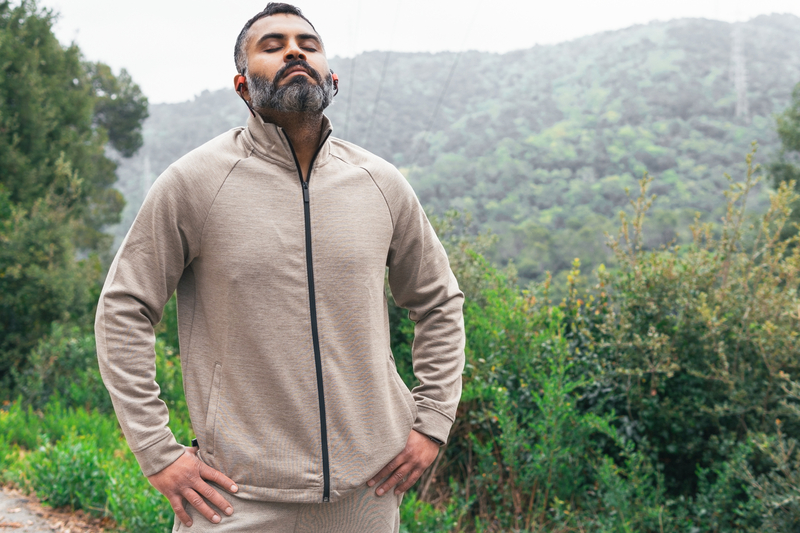Breathing seems simple, right? We breathe every day without having to think about it. But how often do you consciously focus on the technique itself?
Focused and controlled breathing benefits your body and mind.
From a physical standpoint, controlled breathing helps your diaphragm. This muscle is often in a squished position due to the amount of sitting people do. Controlled breathing awakens the muscle (putting you in better posture), allows oxygen to better circulate throughout your body and helps to better remove impurities from your muscles, joints and organs. Focused and controlled breathing also helps to engage the vagus nerve in your brain, which signals for the relaxation system to kick in and helps you to feel less anxious and tense.
From a mental standpoint, it clears your mind and allows you to reflect on your day. What did I do well today? What could I have done better? Controlled breathing helps you be more aware and, therefore, honest when answering these questions.
All it takes is 5-10 minutes of solitary deep breathing to reap benefits. Below are techniques to help you unleash your full breathing potential!
Mindful Breathing:
- Sit comfortably, with your feet flat on the ground, and place your hands on your lap or flat on a table.
- Start by breathing in and out slowly. Your breath in should be 3-5 seconds, and your breath out should be 4-6 seconds.
- Breathe in through your nose, filling your throat, lungs and belly, and then breathe out, letting your breath flow effortlessly out of your body. Repeat, slowly, in and out.
- Let go of your thoughts and worries. Instead, focus on your breath and its pathway as it enters and exits your body.
- Close your eyes, and take 10 deep breaths, slowly counting your breaths with your fingers.
How do you feel? Take note of the changes that just occurred in your body and mind. Do you feel more calm and focused? This technique is great because you can do it anywhere, at any time.
5-minute Vacation
- Lie in a comfortable position on the floor or a mat, with your arms resting by your sides.
- Close your eyes, and picture yourself in a peaceful place.
- Focus on breathing slowly and deeply for 5 full minutes.
If your mind starts to wander, don’t get discouraged. Bring your attention back to your breath and your peaceful place.
Abdominal Breathing
- Sit or lie down in a comfortable position, and place one hand on your chest and the other on your belly.
- Take a deep breath in through your nose, allowing your diaphragm (not your chest) to inflate with air. The hand over your belly should feel movement, but the hand on your chest should not.
- Do this for 10 deep, slow breaths per minute for 5-10 minutes.
This technique might be difficult to master at first, but it is a great tool to calm yourself down before a stressful event, such as a sporting competition, an exam or an important meeting.
Easy Movement Sync
- Select an easy yoga flow or movement sequence that allows you to breathe without difficulty as you move.
- Breathe in as you transition between moves, and breathe out as you settle into a position.
- Your breathing should not feel difficult. If it does, lower the intensity or pace of your movement. Remember, think gentle.
Syncing breath with movement helps create awareness and strengthens your mind-body connection.
Dim the Lights
- Find a quiet, dark setting, and get into a comfortable position.
- Combine the mindful and abdominal breathing techniques.
- Enjoy the tranquility.
Light makes you feel awake. Dimmed light and darkness help your body release relaxation chemicals and slow bodily functions, allowing your subconscious to feel fully relaxed — and allowing you to fully focus on breathing and reflection.
Breathe well, breathe often and live fully.

